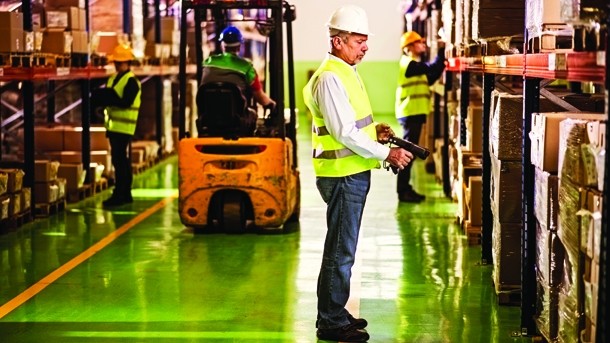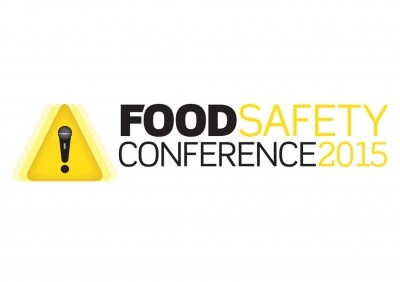Food firms in search of more security

With greater transparency as its main focus, the development of software for food and drink manufacturers is offering greater visibility along the supply chain while increasingly harnessing the use of predictive analytics.
US-based IT researcher Gartner reported a 7.3% increase in the value of the global supply chain management and procurement software market to $8.9bn in 2013, led by enterprise resource planning software supplier SAP, which increased sales by almost a quarter to $2.14bn.
Contributing to its success in the market is a suite of applications offering “the full spectrum across all supply chain capabilities”, says Richard Howells, vice-president of solution management for extended supply chains at SAP.
Whereas others may focus on a few links in the chain, SAP offers packages spanning the sector including “full manufacturing capabilities offering visibility across a global products environment” onto warehousing, logistics and retailing. “We bring it all together, from an integration point of view, because we have a lot of food and beverage customers,” says Howells.
Customers using SAP range from meat and dairy processors and breweries to around 70% of global chocolate production and multinational food groups such as Unilever, which introduced the Ariba Network with SAP Invoice Management by OpenText and SAP Business Suite powered by SAP HANA after setting ambitious targets to double the size of its business and sustainably source 100% of its raw agricultural materials.
Unilever, which processes around 4M invoices from 380,000 suppliers annually, has reduced the time taken to generate activity reports from three weeks to under a day in some cases, through acceleration and simplification of its core processes. The software is used to streamline management, improve efficiency and reduce training costs while supporting multiple channels, suppliers and geographies.
Another IT business, Solutions for Retail Brands (S4RB), offers its Supplier Engagement cloud-based software, which is aimed at boosting collaboration between retailers/brand owners and their supplier base. It functions as an add-on, rather than an alternative to traditional supply chain systems, allowing enhancement of brand initiatives, quality management, responsible procurement and sustainability.
Gourmet popcorn supplier Joe & Seph’s has used S4RB’s software alongside a UK multiple retailer to meet the requirements of the new Food Information for Consumers Regulation (FIR) introduced last December. The software helped the company to trade uninterrupted while making modifications needed to its packaging.
“Typically, most retailers would simply send out a letter asking suppliers to confirm that they were compliant with the new regulations,” says Adam Sopher, co-founder and director of Joe & Seph’s. “For a small business, this can be a time-consuming and costly task. By helping us to meet the requirements of the FIR, our customer really became a champion for small businesses and demonstrated the value of a closer two-way working partnership.”
Challenges (Return to top)
Challenges in the supply chain increase for retailers or multi-national brand owners handling a lot of suppliers or manufacturers assembling complex products with multiple ingredients from different sources, says James Butcher, director of S4RB.
“The importance of good supplier engagement was all too vividly illustrated during the horsemeat scandal, when one of the biggest challenges retailers and brand owners faced was actually understanding exactly who to talk to in their supply chain in order to establish the facts,” says Butcher.
With ‘horsegate’, manufacturers experienced a situation “where what they thought they were buying was not necessarily what they were buying”, says Nick Martin, senior vice president, Northern Europe at Trace One – which supplies lifecycle management software focused on quality and safety.
Vital for manufacturers is “the ability to communicate and collaborate with other supply chains,” says Martin, in the case of a recall. Manufacturers must be able to respond rapidly and then “prove to the market you’ve taken action and are able to back that up.”
Trace One largely services the own-label sector, with 12 of the top 25 global retailers among its client base, but is expanding into the branded products market. “We absolutely see that as a significant opportunity,” says Martin.
ITC Infotech, a supplier of management software spanning the supply chain, also focuses on security, traceability and providing tools to effectively handle product recalls or even just customer returns.
“We are focused on business outcomes rather than just technology,” says Joydeep Sengupta, global practice head for retail consulting for consumer products, hard goods and retail at ITC Infotech. “It’s more complicated and there is no linear process with multi-channels. If you look at the whole supply chain, it’s a very complex network of sellers and buyers.”
Speed of response (Return to top)
For Richard Calder, IT director at Reynolds Catering Supplies: “The speed of response is now a vital concern as food and drink businesses need to be able to see both backward and forward through the supply chain.”
Horsegate and, more recently, the FIR introduction have meant “labelling has become a critical concern, along with total visibility of all source ingredients and this has driven a need for fast, accurate retrieval of a lot of data and comprehensive audits of systems.”
Reynolds, a national distributor of fresh fruit, vegetables, dairy, and cheese, which processes more than 3,000 orders daily via a fleet of 194 vehicles, recently sourced supply chain software from Infor to more effectively manage growth.
Infor supplies a portfolio of applications covering both supply chain management and supply chain execution. Its ‘micro vertical strategy’ focusing on specific industries such as brewing, baking or meat processing, offers greater functionality, according to Mike Edgett, director of industry marketing, process manufacturing at Infor.
Transparency and food safety (Return to top)
“It is about transparency and food safety, about consumer protection and trust,” says Timo Schaffrath, international public relations manager at CBS-System, which offers integrated supply chain management systems. “Using a smart phone or PC, consumers today can easily retrieve product information and thus actively participate in the traceability of products.
“The constantly growing global trade of agricultural products and food calls for efficient safety systems. In the case of an emergency, appropriate recall management based on a well-functioning batch information system can avert major financial damage.
“Businesses that have their processes clearly defined and linked to their flow of information also yield economic benefits. Purchasing optimisation, the very latest stock information, secure planning bases, meaningful evaluations and statistics a traceability system contributes to the increased performance and in making the right decisions based on secure facts.”
Alongside traceability, predictive analytics are currently driving development of supply chain software. “One area we’ve spent a lot of money on is leveraging point-of-sale (PoS) information capture in supply chain processes,” says Howells.
Sengupta says that, while four to five years ago forecasts were largely driven by production and procurement, now the supply chain is demand-driven using predictive analytics. Data from PoS or even social media channels is used to drive forecasts and planning. “One strong thing coming out now which is very critical is social media,” he says. “You can get products to market faster.”
Growth in mobile internet access, and opportunities to scan and capture data, could be exploited to a greater extent allowing firms to analyse historical data but also make market predictions. “Predictive analytics are becoming very important in whole supply chain management,” says Sengupta, citing the potential to hedge commodities years in advance with even a 2% saving in the sourcing of raw materials translating into thousands of pounds for larger manufacturers.
S4RB also identifies predictive analytics as a focus of investment in the food and drink sector, and a tool to improve forecasting and ultimately in-store availability. “The future is about transforming supplier relationships to be more collaborative,” says Butcher.















